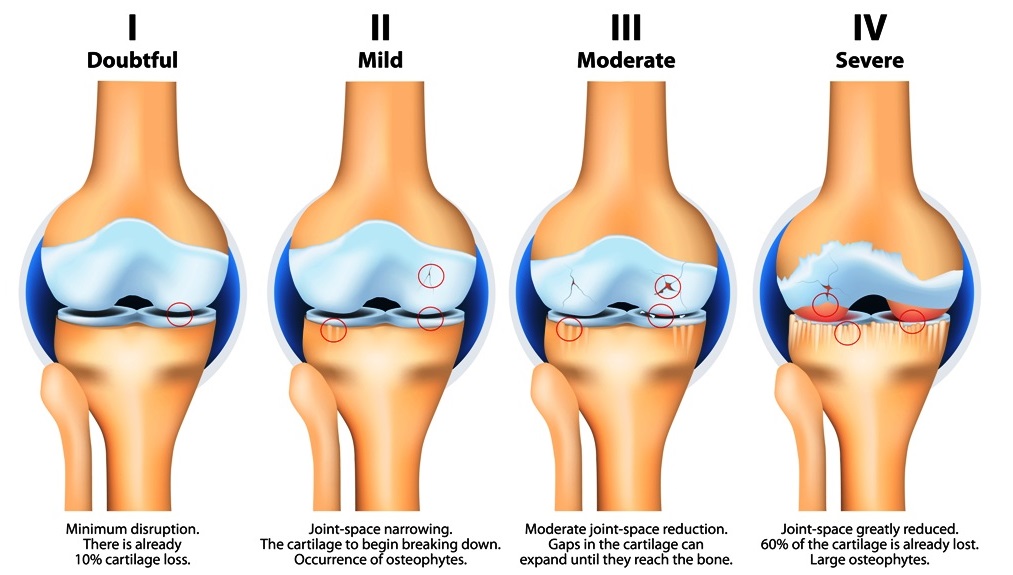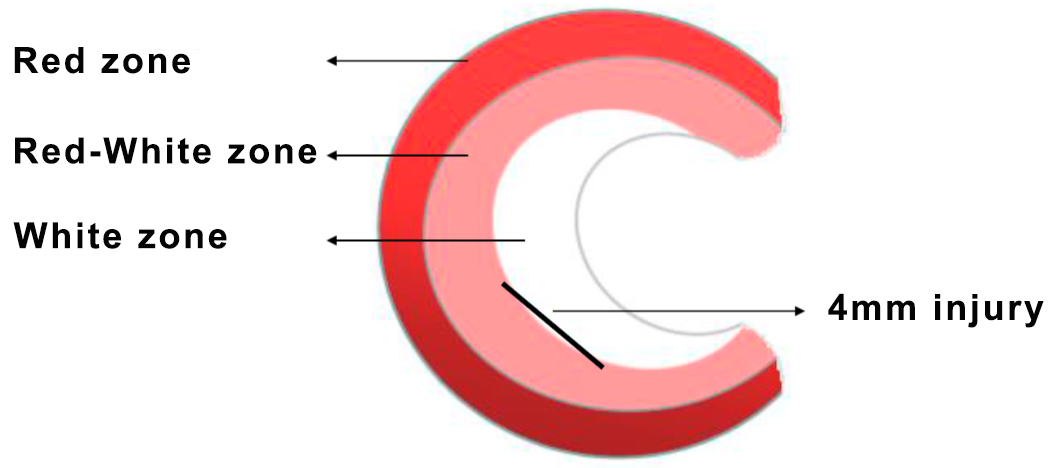Models of Osteoarthritis
Osteoarthritis (OA) is a chronic degenerative joint disease, affecting 300 million individuals commonly over age 40, worldwide. OA is characterized by progressive degeneration of the articular cartilage and secondary osteoproliferation. Currently, OA is managed with NSAIDs and intra-articular therapies to only moderate pain and delay disease progression. Greentech Bioscience is committed to offering validated intra-articular injection of MIA or surgery induced animal models of osteoarthritis and meniscal injury. The in vivo pharmacology studies are conducted in compliance with GLP requirements.

Figure 1. The stages of osteoarthritis (from the network).
Animal Models of Osteoarthritis
There is currently no consensus animal model for osteoarthritis that naturally reflects human disease. Greentech Bioscience offers various animal models of osteoarthritis for preclinical efficacy testing, including MIA model, MMT model and ACLT model. Additionally, we can customize OA models in large animals such as pigs, non-human primates and sheep.
1. Monoiodoacetate Iodoacetate (MIA)-Induced Osteoarthritis
Intra-articular injection of MIA is one of the most widely used experimental model for assessing osteoarthritis. The MIA induced osteoarthritis model is characterized by minimal invasive surgery, simplicity, high success rate and mild stress. The MIA induced osteoarthritis model can be also used to assess OA-related pain in rodents.
Animal Species: mice, rats, rabbits
2. Rat Medial Meniscus Tear (MMT) Model (or Medial Meniscus Transection Model)
The rat MMT model is a frequently used model of post-traumatic OA, which resembles meniscal tear, a common cause of osteoarthritis in humans. The rat MMT model is established by the transection of the medial collateral ligament and the medial meniscus, leading to joint instability and joint incoordination.
3. Rabbit Anterior Cruciate Ligament Transection (ACLT) Model
Anterior cruciate ligament (ACL) injury can cause post-traumatic OA and articular cartilage degradation. The rabbit ACLT is a well-established surgical model of osteoarthritis, established by the transection of the anterior cruciate ligaments on the right knee joints. The rabbit ACLT model causes rapid and severe alterations in the articular cartilage and subchondral bone.
4. Rabbit Meniscal Injury Model
Meniscal injury is one of the most common athletic injuries, leading to knee dysfunction. However, meniscal repair is important for moderating pain and preventing degenerative joint disease. However, meniscal fibrocartilage is an avascular tissue with limited healing capacity, especially the white zone, unlike the red zone, hardly receiving any significant amount of a blood supply. Greentech Bioscience offers a rabbit model of meniscal injury in the white zone, in which has been proven to successfully replicate pathology and bone biomechanics in humans.

Figure 1. Diagram demonstrating the meniscal injury in rabbits.
Clinical Assessment
(1) Pain assessment: incapacitance test, Von Frey filaments
(2) Serum/Synovial marker detection
(3) Histopathology: HE staining, Safranin O and Fast Green Staining, toluidine blue staining
(4) Gait analysis and motor function
(5) Micro-CT: changes in bone mineral density and microstructure of osteophyte and subchondral bone
Case Study
MMT induced osteoarthritis model in SD rats

Figure 2. Toluidine blue staining of joints and cartilage degeneration scoring.
References
1. Greenwood-Van Meerveld B,Prusator DK,Johnson AC.Animal models of gastrointestinal and liver diseases. Animal models of visceral pain: pathophysiology, translational relevance, and challenges.[J].Am J Physiol Gastrointest Liver Physiol,2015,11:G885-903.
2. Drinovac V,Bach-Rojecky L,Babić A,et al.Antinociceptive effect of botulinum toxin type A on experimental abdominal pain.[J].Eur J Pharmacol,2014,:190-5.
Inquiries
Request a quote now, or email us at BD@greentech-bio.com to inquire about our services or obtain a quote for your project.












